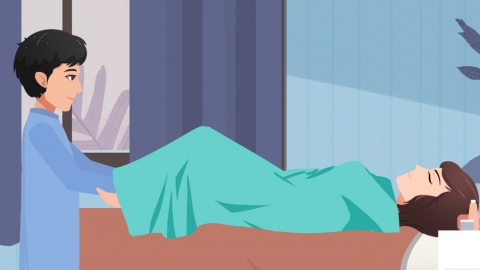What causes uterine displacement?
Generally, uterine displacement may be caused by congenital abnormalities of the uterine ligaments, prolonged不良 posture, pelvic inflammatory adhesions, multiple childbirth injuries, endometriosis, and other factors. It is recommended to seek timely medical consultation to identify the underlying cause and receive symptomatic treatment under a physician's guidance. Detailed explanations are as follows:

1. Congenital uterine ligament developmental abnormalities: During embryonic development, uneven growth of the uterine ligaments may lead to a naturally displaced uterus, such as retroversion or lateral displacement. If no discomfort is present, this is considered a normal physiological variation and does not require special treatment. Regular gynecological examinations are recommended.
2. Prolonged不良 posture: Long-term supine lying or sitting may cause gradual displacement of the uterus due to gravity or pressure, possibly accompanied by lower back discomfort. Adjusting posture, increasing side-lying time, and performing appropriate bending and knee flexion exercises may help improve uterine positioning.
3. Pelvic inflammatory adhesions: Pelvic infections引发 inflammation, which causes adhesions of pelvic tissues, pulling the uterus out of its normal position, often accompanied by lower abdominal pain and fever. Patients may follow medical advice to use medications such as cefuroxime axetil tablets, metronidazole tablets, or levofloxacin hydrochloride capsules to control infection.
4. Multiple childbirth injuries: Repeated childbirth can overstretch and loosen the pelvic floor muscles and ligaments, weakening the support for the uterus and causing displacement, which may be accompanied by a sensation of heaviness. Pelvic floor muscle rehabilitation exercises, such as Kegel exercises and electrical stimulation therapy, can help strengthen support. In severe cases, uterine suspension surgery may be required to fix the uterus in its normal position.
5. Endometriosis: Ectopic endometrial tissue in the pelvic cavity may form adhesive nodules that pull the uterus out of position, often accompanied by dysmenorrhea and painful intercourse. Patients may follow medical advice to use medications such as gestrinone capsules, danazol capsules, or ibuprofen sustained-release capsules to alleviate symptoms. In cases of severe adhesions, laparoscopic excision of ectopic lesions may be required to release adhesions and restore the uterus to its normal position.
In daily life, avoid long-term urinary retention and constipation to reduce pelvic pressure. Choose loose, breathable clothing and avoid tight pants. Maintain a regular作息 schedule, engage in appropriate exercise, and strengthen pelvic floor tissues to help maintain the normal position of the uterus.




